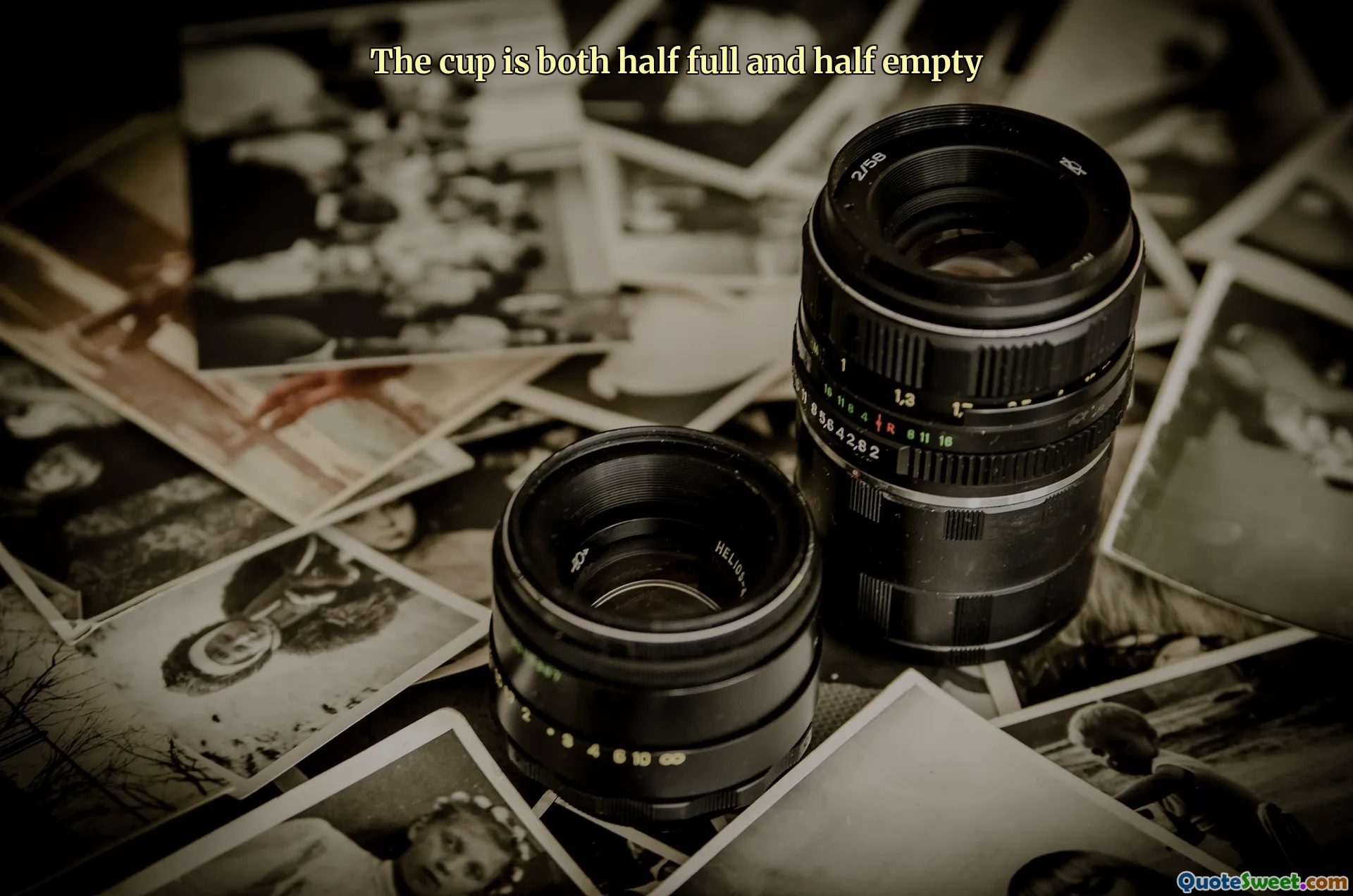
The cup is both half full and half empty
This quote encapsulates the fundamental perspective of optimism versus pessimism, illustrating how the same situation can be viewed in vastly different ways depending on one's mindset. The image of a cup being both half full and half empty signifies that perception plays a crucial role in how individuals interpret their circumstances. People who see the cup as half full lean towards an optimistic outlook, appreciating what they have and focusing on the positives, thus fostering gratitude and hope. Conversely, viewing it as half empty often correlates with a more pessimistic attitude, highlighting what is lacking or going wrong. Recognizing that both perspectives are valid highlights the importance of mindset and attitude in shaping personal experiences and emotional wellbeing. It encourages a balanced view, prompting us to consider that our perception influences our reality and how we navigate life's challenges. By understanding this duality, one can develop a more mature and nuanced approach to life's uncertainties, acknowledging both the good and the bad without overemphasizing either side. This awareness can facilitate resilience, empathy, and adaptability, fostering healthier relationships and a more positive inner dialogue. Ultimately, the quote reminds us that perception is fluid and that choosing to see the abundant and hopeful side of any situation can lead to greater personal happiness and growth. Embracing this mindset allows individuals to cultivate optimism even amid difficulties, continuously shifting their perspective to find meaning and purpose in everyday life.










